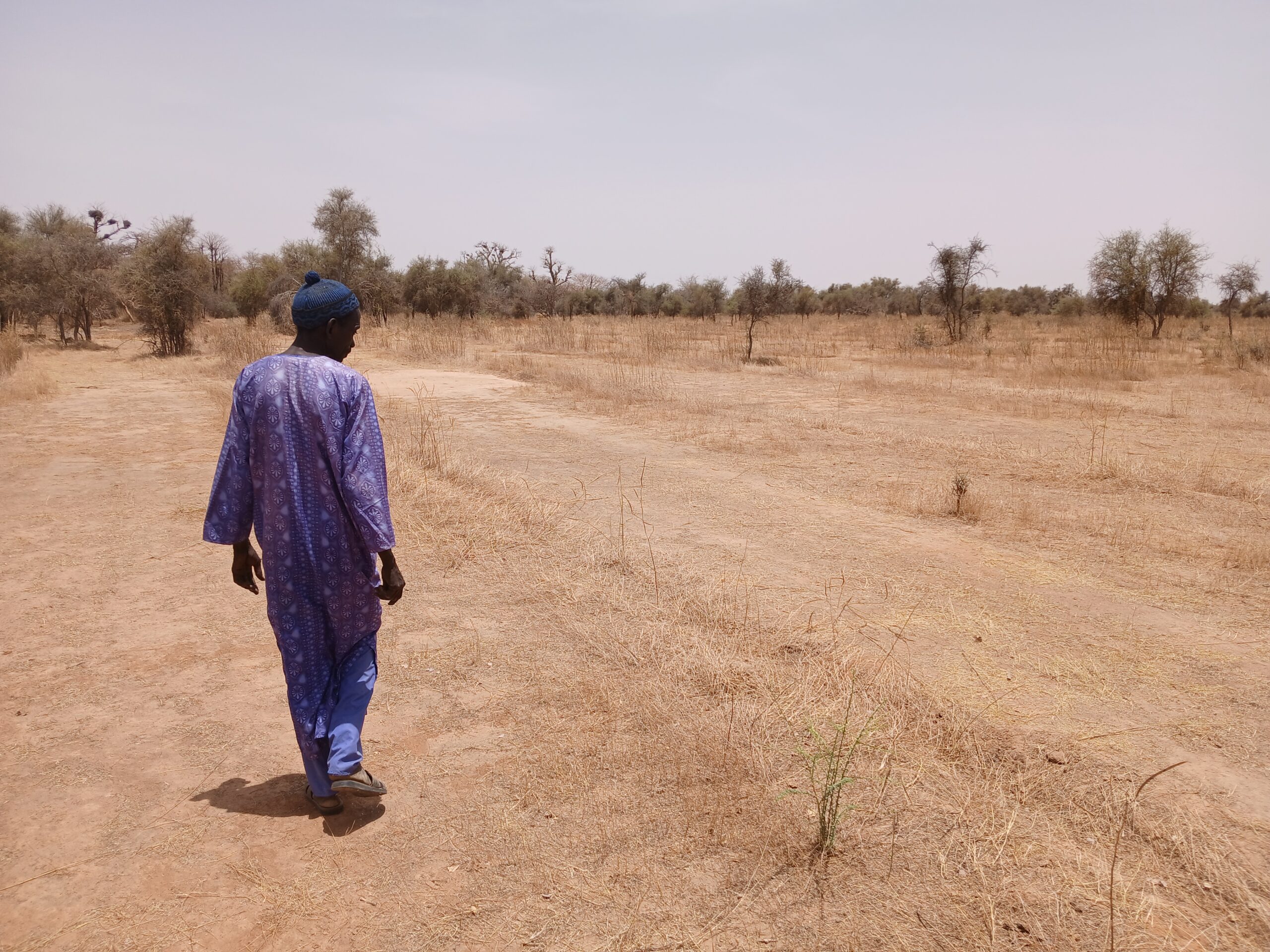For BBC Radio 4: From Our Own Correspondent
August 2024
The journey from Senegal’s coast into its arid Sahel region involved long rides on mototaxis and in battered jalopies – ancient Peugeot 505s that seemed to be held together by little more than paint.
Eventually I reached Linguere, a flyblown village in the Ferlo Desert. A 4X4 picked me up to continue the drive through scrubland on dirt roads, past thorny balanite trees and lonely, bulbous baobabs, to reach a grass-roofed settlement thronged with goats and long-horned cattle. It was 43 degrees Celsius, and the ground was yellow dust. It seemed an unlikely starting point for Africa’s Great Green Wall.
The Great Green Wall is a plan to plant a corridor of trees for almost five thousand miles through eleven countries in the Sahel, connecting Senegal with Djibouti, the Atlantic with the Red Sea. Launched in 2007 by the African Union, with the aim of stopping desertification, it has the potential – claims the UN – to be ‘the largest living structure on the planet’. But in a profoundly unstable region, with countries like Mali, Burkina Faso, Niger, Chad and Sudan mired in coups and civil wars, this continent-spanning forest remains a distant dream. Senegal – a stable democracy, even if the last elections were a little touch and go – is the only country to have made substantial progress. It has planted up 50,000 acres, or around eleven million trees. I had come to this village, Velingara, to meet some of those doing the sowing.
Omar Sall, an agroforestry expert working for the Belgian NGO WeForest, met me at the nursery, stoutly fenced against ravaging goats. Here, in black plastic pots, shaded by screens from the merciless sun, 27,000 saplings stood at various stages of growth. Set against the glare of the sand, their green was almost psychedelic. Omar led me along the rows, pointing out the delicate shoots of balanite, baobab, two types of acacia and nine other native species. His aim was to establish which trees take, and which do not. Unsurprisingly, the biggest challenge is providing water.
There are also cultural challenges. The local people, the Fulani, are predominantly pastoralists. Their sheep, goats and cattle strip the plantlife down to the bare earth – a primary reason why the existing trees are essentially childless, unable to regenerate. Some Fulani communities initially feared that attempts at reforestation would deprive them of their grazing lands – an iteration of the age-old tension between herders and farmers that is the source of so many conflicts raging in the Sahel. Omar and his colleagues had to work hard to build trust and relationships.
‘In the beginning it was not easy,’ he told me. ‘But now local people are really involved. Everything we do, we do it with the community – or, everything we do is done by the community.’
After another drive through the bush, we arrived at one of three experimental planting sites: eighty hectares, that was again, well protected from grazing animals. In contrast to the barren earth elsewhere, the trees in this spot were surrounded by undergrowth, and grass – dry yellow grass, but still grass – grew on the ground between them.
Under the shade of a balanite, next to a hulking termite mound, sat a group of Fulani men and women who had just finished baling hay. An elder called Omar Dea, his head and face swathed in a blue turban, showed us around with pride. Before the 1990s, he said, tree cover was denser and more diverse here. Then a combination of higher temperatures, less rainfall and more cattle stripped the land of new growth and turned the ground to dust.
Now he saw this landscape returning to what he remembered from his youth. Saplings were growing, and he hoped that, given time, wildlife would return. ‘It is easier to feed our animals now,’ he said. ‘We used to have to go a long way to buy fodder from elsewhere. Now grass is growing here so we can harvest it.’ Villagers were also being paid to collect wild seeds. In the future, they will do the tree planting work themselves.
As for the rest of the Great Green Wall, work has started on just eighteen per cent of the proposed area, ten years on from when it was first launched. The original vision of an unbroken green corridor across Africa has evolved – or, some would say been scaled down. Now, it’s more of a ‘green mosaic’ of loosely connected local schemes, drawing on traditional and indigenous land use techniques. Its ongoing goal is to restore 250 million acres of land, which will in turn capture an estimated 250 million tonnes of carbon dioxide, and create ten million jobs by the year 2030.
Whether all that will happen or not remains uncertain. But as we walked back to the car, another man accompanying us spotted something in the grass. He excitedly moved the stems away to reveal what he had found: an inch-high baobab, which had not been planted here but had appeared all by itself, proof that, given a chance, forest can regrow naturally. Bending down, he tenderly lifted the hem of his blue robe to give the sapling a moment of shade before he walked on.
That image stayed with me as we left Velingara. An elderly man shading a green sapling from the sun – a symbol of hope, but also a reminder of the precarity of life in a region of the world that is only getting hotter.
Listen to this on BBC Radio 4’s From Our Own Correspondent. It starts at timecode 11:45.


